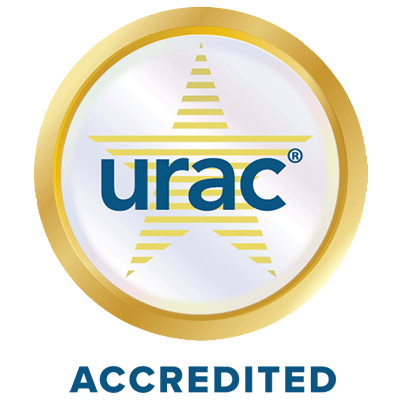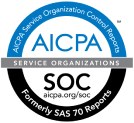In workers’ compensation, pharmacy network utilization has always been an evolving challenge. For a variety of reasons, injured workers in some states are filling their prescriptions via out-of-network (OON) channels – most often through physician dispensing or OON mail order pharmacies – a practice that negatively impacts payers and even the patients themselves.
Injured workers are frequently in the dark about OON prescription drug channels and the ramifications of bypassing network retail pharmacies. In the case of OON mail order pharmacies, they may choose them for sheer convenience. Other times, it may be frustration with prescription delays or even denials that are contributing to their choices. And in cases of physician dispensing, which is prescriber-driven behavior, the injured worker may not even realize they have the option to request a written prescription to take to their local pharmacy.
Because OON activity is driven by many factors, managing it requires a nuanced, multi-pronged approach. One important component of this approach is direct engagement with the injured worker. In addition to empowering injured workers to take a greater role in their own care, we’ve also seen that it can play a positive role in driving pharmacy network utilization.
Why Is OON a Problem?
OON pharmacy use is a problem in workers’ comp for many reasons. These include, but are not limited to:
- Circumventing cost containment: OON pharmacies operate outside the cost containment structure that is used for other types of medical services. As a result, OON pharmacies charge more than their in-network counterparts – while often providing no significant added value.
- Lack of care coordination and increased patient risk: When prescriptions are filled outside the pharmacy network, claims professionals cannot see real-time medication activity, and pharmacists lose the holistic view of a patient’s treatment history. This can lead to inappropriate or duplicative treatments that detract from injured worker safety. The beauty of real-time adjudication is that the pharmacist can pinpoint where there’s potential therapeutic risk – a positive control that is lost when prescriptions are filled out of network.
- Working outside regulations: With everything OON pharmacies are doing, it almost seems as if they are designed to exploit regulatory loopholes. For instance, even when certain states mandate that other medical services must be in network, they still allow injured workers to use any pharmacy – whether in-network or not. Some pharmacies operating in these states even market aggressively to specific occupation types, like first responders.
The Injured Worker’s Role in Their Care
Patients as a stakeholder hold the greatest individual level of influence over the outcomes of their care – for better, or for worse. In a research study conducted by Healthesystems, two-thirds of workers’ comp professionals felt that the injured worker often does not play enough of a role in mitigating complexities, but rather, contributes to them.
According to the claims professionals surveyed, patient attitudes/behavior was one of the top contributors to claims complexity. Other contributors included treatment concerns, injury concerns, factors impacting treatment (such as comorbidities), claims process concerns (such as incomplete information), litigation, and medication concerns. Fortunately, providing patient education and engagement throughout the claims process can mitigate some of these factors.
How Can We Change Injured Worker Behavior?
Shifting injured worker behavior is by no means easy, but it’s possible – and it’s worth the effort. Communicating with the injured worker via digital channels is one way to provide early, right-time, and ongoing engagement. For instance, getting information related to pharmacy benefits into a patient’s hands as early in the claim as possible can have a material impact on their pharmacy choice.
After implementing a text and email campaign to send injured workers information on their pharmacy benefits, Healthesystems saw a three-fold increase in utilization of our network pharmacy search tool, as well as a modest increase in pharmacy network penetration directly tied to these efforts. The campaign also greatly increased the speed at which injured workers received their initial benefit information, helping them to get needed medications without delay.
These types of communications are not a one-and-done approach. In addition to initial benefits communication, there are other targeted opportunities throughout the course of a claim to educate the injured worker and help shape behavior – such as when physician dispensing or other OON transactions occur.
One Lever in a Comprehensive OON Strategy
Engaging injured workers directly is simply one part of a more comprehensive strategy to reign in OON activity. Other impactful OON strategies employed by Pharmacy Benefit Managers (PBMs) may include:
- Enhanced network capabilities – Providing injured workers access to a robust national pharmacy network that includes all major retail chains, regional chains, and independent and specialty pharmacies, as well as convenient mail order options
- Policy advocacy and regulatory monitoring – Monitoring and reporting on regulatory changes that impact pharmacy utilization and advocating for fair and balanced public policy
- Strategic formulary development and management – Offering comprehensive workers’ compensation drug formularies designed to support the varying needs of injured worker populations and reduce friction in the dispensing of needed medications
- Clinical guidance and automation – Embedding clinical guidance into claims workflows at the point of authorization, coupled with real-time communication capabilities that streamline prior authorization to reduce friction in the process, avoid injured worker dissatisfaction, and help prevent downstream OON activity
- Advanced data analytics – Employing predictive analytics to identify claims with potential OON activity and escalate them to claims professionals at key decision points (such as during prior authorization)






